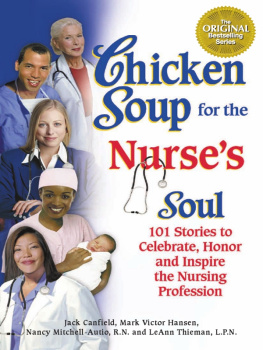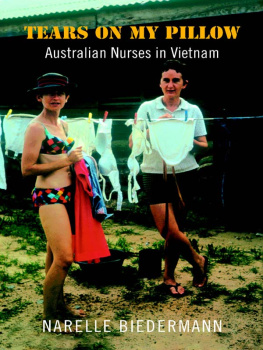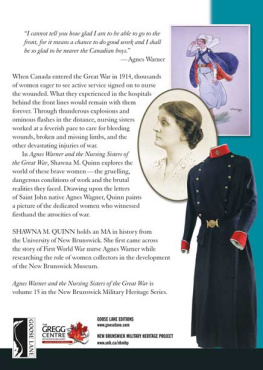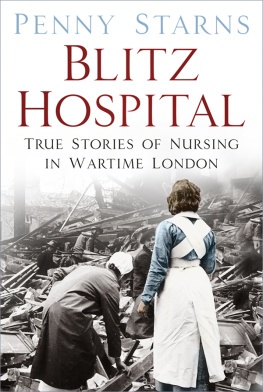RUSSIAS SISTERS OF MERCY AND THE GREAT WAR
MODERN WAR STUDIES
Theodore A. Wilson
GENERAL EDITOR
Raymond Callahan
Jacob W. Kipp
Allan R. Millett
Carol Reardon
Dennis Showalter
David R. Stone
James H. Willbanks
SERIES EDITORS
RUSSIAS SISTERS OF
MERCY AND THE
GREAT WAR
More Than Binding
Mens Wounds
LAURIE S. STOFF
UNIVERSITY PRESS OF KANSAS
To RSS, MS, and MDS
2015 by the University Press of Kansas
All rights reserved
Published by the University Press of Kansas (Lawrence, Kansas 66045), which was organized by the Kansas Board of Regents and is operated and funded by Emporia State University, Fort Hays State University, Kansas State University, Pittsburg State University, the University of Kansas, and Wichita State University
Library of Congress Cataloging-in-Publication Data
Stoff, Laurie, author.
Russias Sisters of Mercy and the Great War : more than binding mens wounds / Laurie S. Stoff.
pages cm. (Modern war studies)
Includes bibliographical references and index.
ISBN 978-0-7006-2125-5 (cloth : alk. paper) ISBN 978-0-7006-2165-1 (ebook)
1. World War, 19141918Medical careRussia. 2. NursesRussiaHistory20th century. 3. NursesRussiaBiography. 4. Military nursingRussiaHistory. 5. Women and warRussiaHistory. 6. World War, 19141918Russia. 7. World War, 19141918Participation, Female. I. Title.
D807.R9S76 2015
940.475092520947dc23
2015023667
British Library Cataloguing-in-Publication Data is available.
Printed in the United States of America
10 9 8 7 6 5 4 3 2 1
The paper used in this publication is recycled and contains 30 percent postconsumer waste. It is acid free and meets the minimum requirements of the American National Standard for Permanence of Paper for Printed Library Materials Z39.48-1992.
ACKNOWLEDGMENTS
I would like to express my deepest gratitude to the individuals and institutions that provided me with support during the process of research and writing this book. Funding for travel to collections and research was provided by the American Councils for International Education Title VIII Research Scholar Program Grant, the Louisiana Tech University International Summer Faculty Development Grant, the Louisiana Tech University Summer Research Grant, and the University of Illinois Summer Research Lab program, as well as the Department of History at Louisiana Tech University. I am grateful to the fantastically helpful librarians on staff at the University of Illinois Library in its Slavic and East European Collections and Services, who were invaluable in providing me with assistance in locating materials. In particular, I thank Jan Adamczyk, who not only went out of his way on a number of occasions to help me track down the obscure sources that I required, but always did so with a smile and usually a good joke. The archivists at Stanford Universitys Hoover Institution Archives were similarly extremely accommodating and helpful, assisting me in locating sources and images held in the superb Political Poster Collection housed there. The staff of the Russian State Military-Historical Archive in Moscow also provided me with access to vitally important documents for this project.
The writing process was made possible by a Louisiana Board of Regents Support Fund Award to Louisiana Artists and Scholars (ATLAS) Grant, providing me with a year of release from teaching and service to focus on preparation of the manuscript. I am indebted to William Willoughby, who helped me prepare numerous grant proposals and continually encouraged me to push forward with my research plans despite many obstacles. Many individuals provided me with valuable feedback on various aspects of the emerging manuscript. Specifically, I would like to thank Christine Hallett, Marianna Muravyeva, Karen Petrone, Rochelle Ruthchild, Joshua Sanborn, and David Stone, as well as the reviewers for Aspasia , The International Yearbook of Central, Eastern, and Southeastern European Womens and Gender History for their suggestions. I am eternally grateful to Denise Youngblood, who read the entire manuscript and provided me with extremely useful commentary and advice, as well as mentoring, friendship, and support for the last ten years. I would also like to thank the members of the editorial board of Russias Great War and Revolution , who saw various iterations of shorter pieces that were incorporated in the manuscript and gave me constructive criticism as well. Among them, Boris Kolonitskii was extremely helpful to me in this project, sharing his tremendous insight into the war and revolutionary period generally and Russian nursing specifically, as well as his extensive collection of images, many of which appear in this book. Additionally, to Melissa Stockdale I express my great thanks for her valuable commentary, for directing me to a number of critical sources, and for her wonderful camaraderie in the Moscow archives and library. Additionally, I would like to express my gratitude to my former colleagues at Louisiana Tech University and my current colleagues at Arizona State University for feedback and general collegial support. Thanks in particular to Stephen Webre, who was an excellent mentor and provided me with extensive support during my tenure at Lousiana Tech to allow me to pursue my research goals.
On a more personal level, there are many people in my life to whom I owe enormous debts of gratitude for their material and emotional support. My husband, John Benschoter, has been the most supportive and understanding spouse an academic could ever hope for, allowing me to pursue my career goals while providing the most amazing care for our family. My immediate and extended family and friends have been similarly supportive and encouraging. I dedicate this book to the important women in my life: my mother, Roslyn Stoff, and my grandmother, Mildred Stoff, both of whom provided me with indefatigable role models, and my daughter, Meghan Stoff, who will carry their memories with her into the future.
INTRODUCTION
NURSING IN THE GREAT WAR: THE RUSSIAN EXPERIENCE
The Great War is salient in the history of warfare in a number of ways, including how women experienced the war. The pervasive nature of the hostilities generated an extraordinary degree of female involvement. Most notably, women were affected by and became involved in war on a level never before encountered in history. Russias women, like those of many of the other belligerents, participated in the war effort on a mass scale, working in various capacities both at the front and in the rear. They joined numerous voluntary organizations created to meet wartime needs. Most of these women were not attached to the army but worked through civilian governmental and nongovernmental organizations such as the Union of Zemstvos and Union of Towns (organizations of local government bodies that provided a variety of services) and the Russian Society of the Red Cross. Womens groups around the country organized committees dedicated to womens war work. The major womens organizations engaged in a variety of war-related endeavors, from military supply to caring for war victims, refugees, orphans, and prisoners of war. Thousands more women volunteered their time, energy, and resources in activities such as sewing soldiers clothing and linens, cutting bandages, making care packages for troops, staffing travelers aid stations for soldiers in transit, and working in shelters, soup kitchens, orphanages, and other facilities for the homeless and disabled. Women also performed a number of vital auxiliary services for the Russian armed forces. Peasant women were recruited to dig trenches for the troops. Women worked as cooks, supply clerks, drivers, and scouts both behind the lines and in the advanced positions. Some women even managed to participate in combat.









